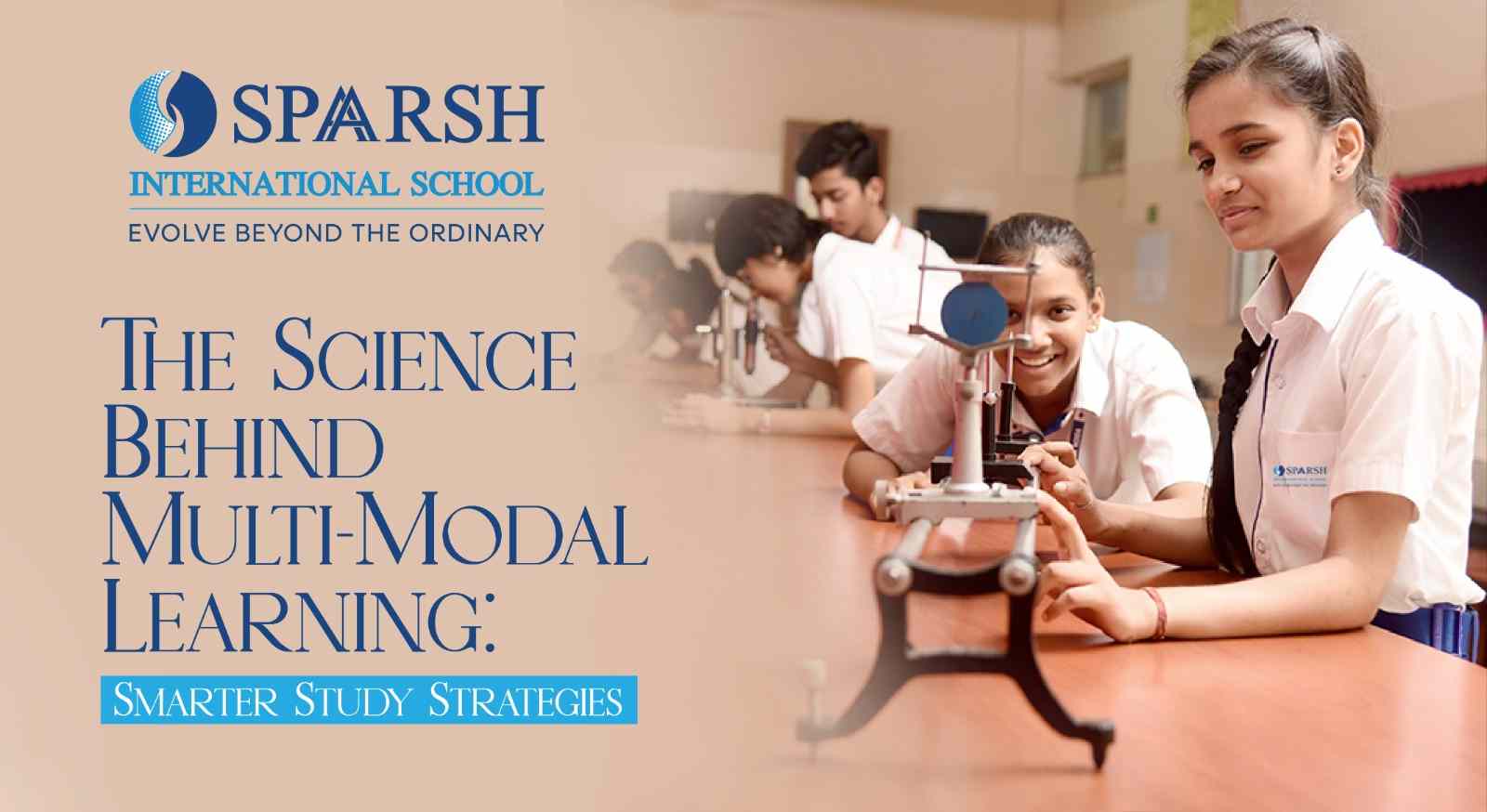

Every parent hopes their child develops the ability to learn well and use knowledge effectively. Marks are important, but learning today needs more than memorising facts. Each child learns differently. Some absorb information quickly when they read. Others understand better when they watch a demonstration or try things out themselves.
Multi-modal learning addresses this diversity. It combines visual, auditory and hands-on methods to create a richer learning experience. When children see, hear and do things themselves, they not only understand better, but also retain information for longer. In a world where education must prepare children for life beyond exams, this approach is both practical and powerful. Schools that embrace multi-modal learning give children the chance to build curiosity, confidence and problem-solving skills that last well into adulthood.
Multi-modal learning simply means using multiple approaches to teach a concept. A lesson is not limited to reading from a textbook. It could include a short video, a discussion with peers and a practical demonstration. Using different modes activates different parts of the brain and makes connections stronger.
For parents, this means that learning is no longer a one-size-fits-all process. Children are supported in a way that matches their natural style of learning, which reduces frustration and makes study sessions more effective.
There is strong science behind this method. When information is presented in varied formats, the brain processes it through multiple pathways. This leads to a stronger grasp of the material and people remember it better down the line. Some key upsides are deeper dives into the subjects. Long-term memory gets a real boost. Attention spans hold up better in class. Students gain confidence to use what they've learned in fresh ways. And there's this real spark of interest in the whole learning process. Basically, children turn into active players instead of just sitting there listening. That shift keeps them hooked and pushes them to stay motivated.
Schools aiming for that well-rounded education pull in all sorts of tools to make lessons interesting and engaging. Teachers blend reading with pictures, chats and hands-on activities. Take a history lesson, for instance. It might have a timeline on the wall. Then a quick documentary snippet, followed by children teaming up on a project. Science classes often kick off with experiments. Right after, they do some thinking exercises to wrap it up.
All this mixing helps out students who shine in different areas. Visual types love the diagrams and charts. Those who learn by hearing get a lot from the discussions. And the ones who need to move around thrive on the activities. Sparsh International School weaves these in pretty seamlessly. So every child gets a shot at connecting with the material and actually having fun with it.
Parents can contribute to this process at home. No need for some big elaborate plan - it's mostly just about introducing several aspects of study tools and introducing to children visuals like flashcards, activities alongside learning from books. You could try suggesting videos that explain those tricky topics. Or get them to tell you what they learned, like explaining the lesson back. Diagrams work great too for pulling notes together into charts. Strategy games help build up reasoning. Linking ideas to everyday things, like cooking a meal or shopping trips or even travel plans greatly enrich a child's overall learning experience. This kind of home learning style connects school lessons to real life. It makes understanding stick better.
The world's going to ask a lot more from them tomorrow. Not just knowing books inside out. They have to break down problems, work with teams and come up with creative fixes for problems. Thats where multi-modal learning fits in. It builds those skills from the very beginning. Children get to toss ideas around. They jump right into group work and come up with innovative solutions.
Parents, this whole thing means your child isn't only memorising facts for exams. It's really about actual learning, building real grit and flexibility in the learning process, things that helps them handle anything the future might toss their way, with confidence.
Parents are key in helping build those solid learning habits. Your encouragement can make a big difference. Celebrate efforts as much as results. Talk to children about what they enjoyed learning that day. Offer help if they need it. But give them room to figure things out on their own. That kind of balance really helps build up their self-discipline and confidence too.
Multi-modal learning works very well for getting children ready for school — and for life after school. It lets them gain a deeper understanding of concepts and keeps them engaged, building lifelong skills along the way. Sparsh International School, recognised as one of the best CBSE schools in Greater Noida, uses this approach to make learning interactive and meaningful. Parents who choose Sparsh International School give their children the advantage of a well-rounded education that builds confidence and lifelong curiosity.
FAQ 1: Does multi-modal learning suit every child?
Yes. By using different teaching styles, every child finds at least one method that works well for them. This helps cut down on frustration. It keeps learning smooth and more effective.
FAQ 2: Will multi-modal learning improve performance in exams?
When children internalise a topic deep down, the retention is way better. That means they give answers with more confidence and their results are better